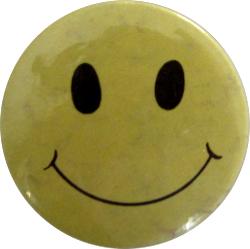House music
House music is a genre of electronic dance music that originated in the early 1980s in Chicago, Illinois, United States. It was created by DJs and music producers in the city's underground club scene, particularly at the Warehouse club, which is often credited as the birthplace of house music.
History[edit | edit source]
House music emerged from the post-disco era, drawing influences from disco, funk, and soul music. The genre was pioneered by DJs such as Frankie Knuckles, often referred to as the "Godfather of House," and Larry Heard, also known as "Mr. Fingers." These artists experimented with drum machines, synthesizers, and sequencers to create a new sound that was more electronic and repetitive than disco.
Characteristics[edit | edit source]
House music is characterized by a repetitive 4/4 beat, a tempo typically ranging from 120 to 130 beats per minute, and the use of drum machines like the Roland TR-808 and Roland TR-909. The genre often features synthesized basslines, electronic effects, and samples from other genres of music. Vocals in house music can range from soulful and melodic to minimalistic and repetitive.
Subgenres[edit | edit source]
House music has spawned numerous subgenres, each with its own distinct style and sound. Some of the most notable subgenres include:
- Deep house: Known for its complex melodies, use of jazz and funk influences, and a more laid-back tempo.
- Acid house: Characterized by the use of the Roland TB-303 bass synthesizer, creating a squelching, resonant sound.
- Tech house: A fusion of house and techno, featuring minimalistic beats and a focus on rhythm.
- Progressive house: Known for its build-ups, breakdowns, and anthemic melodies.
Cultural Impact[edit | edit source]
House music has had a significant impact on the global music scene, influencing various other genres such as techno, trance, and drum and bass. It has also played a crucial role in the development of the modern rave and club culture. The genre has produced numerous iconic tracks and artists, and it continues to evolve and inspire new generations of musicians and fans.
Notable Artists[edit | edit source]
Some of the most influential house music artists include:
See Also[edit | edit source]
References[edit | edit source]
External Links[edit | edit source]
Template:Electronic music genres
Search WikiMD
Ad.Tired of being Overweight? Try W8MD's physician weight loss program.
Semaglutide (Ozempic / Wegovy and Tirzepatide (Mounjaro / Zepbound) available.
Advertise on WikiMD
|
WikiMD's Wellness Encyclopedia |
| Let Food Be Thy Medicine Medicine Thy Food - Hippocrates |
Translate this page: - East Asian
中文,
日本,
한국어,
South Asian
हिन्दी,
தமிழ்,
తెలుగు,
Urdu,
ಕನ್ನಡ,
Southeast Asian
Indonesian,
Vietnamese,
Thai,
မြန်မာဘာသာ,
বাংলা
European
español,
Deutsch,
français,
Greek,
português do Brasil,
polski,
română,
русский,
Nederlands,
norsk,
svenska,
suomi,
Italian
Middle Eastern & African
عربى,
Turkish,
Persian,
Hebrew,
Afrikaans,
isiZulu,
Kiswahili,
Other
Bulgarian,
Hungarian,
Czech,
Swedish,
മലയാളം,
मराठी,
ਪੰਜਾਬੀ,
ગુજરાતી,
Portuguese,
Ukrainian
Medical Disclaimer: WikiMD is not a substitute for professional medical advice. The information on WikiMD is provided as an information resource only, may be incorrect, outdated or misleading, and is not to be used or relied on for any diagnostic or treatment purposes. Please consult your health care provider before making any healthcare decisions or for guidance about a specific medical condition. WikiMD expressly disclaims responsibility, and shall have no liability, for any damages, loss, injury, or liability whatsoever suffered as a result of your reliance on the information contained in this site. By visiting this site you agree to the foregoing terms and conditions, which may from time to time be changed or supplemented by WikiMD. If you do not agree to the foregoing terms and conditions, you should not enter or use this site. See full disclaimer.
Credits:Most images are courtesy of Wikimedia commons, and templates, categories Wikipedia, licensed under CC BY SA or similar.
Contributors: Prab R. Tumpati, MD




